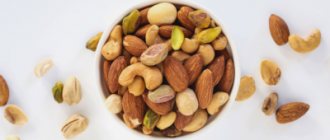What science says about how many times a day you should eat.
Zozhnik popularly outlines the position of the International Society of Sports Nutrition regarding meal frequency, based on dozens of scientific sources. So, how many times a day should you eat, according to scientific research?
The statistics are unemotional: among US adults over 20 years of age, 65% are overweight or obese, and there are no signs of a significant improvement in this situation. In Russia, this indicator is not much better - about 51% of people (data: 2010) weigh more than necessary and the dynamics are also not encouraging.
We will not list the obvious harm from excess weight in this text. Let’s dwell on just one of the frequently discussed topics – how body weight and composition changes depending on the frequency of meals.
(Here and further we will cite as an example studies of mainly Americans, since a Russian person is essentially exactly the same, only his bonds are slightly different, and there is practically no data and research on Russia).
How many times a day do people eat?
Children have a natural need to eat small portions (“peck” food) throughout the day. However, after reaching a certain age, the child gets used to consuming food in a certain way.
How much, often and what exactly we eat is influenced by many factors - from family and country traditions to genetics. Recent research suggests a partial genetic influence on individual meal frequency. According to the Nationwide Food Consumption Survey (NFCS, 1987–1988), the average meal frequency among 3,182 American adults was 3.47 times per day—that's when all snacks, including high-calorie drinks, are taken into account. if we discard intermediate meals up to 70 kcal (for example, tea, coffee, drinks), then the number of meals decreased to 3.12 per day.
Actually, this fact is confirmed by the traditionally common 3 meals a day: those same breakfast, lunch and dinner. Even though nutritionists and trainers often recommend eating small meals more often throughout the day to gain metabolic benefits, people are hesitant to follow them.
Some scientists believe that eating infrequently, but in large portions, increases the risk of obesity by increasing synthesis and storage (lipogenesis or “deposition” of fat) after eating. However, scientists have not come to a consensus: the debate continues, since research data is contradictory.
Who is eligible for six meals a day?
So, does this mean you should give up eating six meals a day, where each meal is spaced several hours apart? Not necessary. Optimal meal times may depend on various factors unique to each person. That is why scientists advise choosing the type of diet that makes you feel most comfortable without overeating.
Some may feel great with a routine of up to three meals each day, but others may find that it's simply too much food at once for them. Eating three meals a day may make some people feel tired, but eating six meals a day will be more comfortable for these people, as it will promote more stable blood sugar levels and more energy. Eating three meals a day can be especially difficult for women who have recently given birth. "Many mothers spend so much time with their children that they can't sit down and eat dinner...eating more frequently fits better with their lifestyle," McKittrick notes.
Health concerns may also dictate which eating style is best. For example, people with diabetes or hypoglycemia (low blood sugar) may feel tired and weak if they go too long without eating, so six small meals may be a better option. Those with other conditions such as gastroparesis (stomach motility disorder), irritable bowel syndrome, and heartburn may feel better if they eat small meals spaced three to four hours apart. The same can be said about older people. "As you get older, you don't have as much of an appetite and you get full faster," McKittrick explains.
How many times a day to eat: Does meal frequency affect your body?
Over the past few years, researchers have been looking into the effects of meal frequency. Here are the results of some of the most interesting ones.
Some early human studies, published about 50 years ago, assessed the effects of meal frequency on weight and body composition. In some experiments, a similar connection was discovered. Others refute the effect of increasing the number of meals on weight and body composition.
Some studies show an inverse relationship between food frequency and body composition/weight – i.e. the more meals you eat, the less you weigh (all other things being equal - for example, with the same number of calories). However, these data are questioned: in addition to the obvious genetic differences of the subjects, there are other factors that can influence the results and conclusions.
For example, in experiments that use self-reported data to compare total daily energy expenditure, food intake is often underestimated (We wrote about this case in the text “Why Some People Didn’t Lose Weight on a Calorie Deficit” - where in the study people cheated in 1. 5-2 times). Several studies have found significant underestimation of calories consumed by overweight and obese people, as well as older people, who tend to underestimate what they eat.
The source notes a rather positive effect of eating more frequently on weight and body composition, even taking into account the possibility of underestimating people who restrict food/diet. However, this difference is insignificant and is not confirmed by many other studies.
Confounding factors aside, most studies show that increasing meal frequency does not make a significant difference in weight loss/body composition changes.
Experimental research: there is no difference in the number of meals for ordinary people
Most experimental studies involve overweight and obese people. One study found that when total daily calories were kept constant (but with a calorie deficit for weight loss), there was no difference in weight loss, even when the frequency of meals per day increased from one to nine . Roughly speaking, you can eat your, for example, 1500 kcal at least in one meal, even divided into 9 meals - there will be no difference - you will lose the same weight.
In 2010, Cameron and his colleagues evaluated the effects of an 8-week hypocaloric diet on obese men and women. One group of subjects consumed food 3 times a day (low food frequency), the other group had 3 main and 3 additional snacks (high food frequency). In both groups, caloric restriction was similar (minus 700 kcal/day from normal). As a result, a similar decrease in body weight (about 5% of the original), lean mass, fat and total BMI was recorded. There were no significant differences between groups with different eating frequencies in any of the obesity characteristics .
In addition to the experiments on fat people, several studies have been conducted on people of normal body weight. In terms of optimizing weight and body composition, the results were similar to those found in overweight/obese people: increasing meal frequency did not provide any benefit. Even on an isocaloric diet or when caloric intake helps maintain current body weight, increasing meal frequency from 1 to 5 or from 1 to 3 did not improve weight loss .
How to learn to control hunger?
Coping with hunger is usually difficult for overweight people.
Coping with hunger is usually difficult for overweight people
This is due to a systematic violation of the diet. The stomach gets used to receiving large portions and after a few hours requires additional nutrition.
Monitoring your diet will help you learn to control your hunger. When the body requires replenishment 2-3 hours after a meal, it means that a person has consumed a lot of empty calories (sweets and baked goods) and received almost no fiber (vegetables).
How many times a day to eat: exceptions to the rule - children and athletes
An exception is the work of Fabry et al. The researchers showed that the increase in skinfold thickness in 10-16 year old boys and girls was significantly greater with 3 meals a day compared to 5 or 7 meals. At the same time, no significant differences were found between girls and boys aged 6-11 years.
Interestingly, many of the reports of improvements in body composition with increased eating frequency were obtained when the experimental group consisted of athletes. Thus, based on this limited information, it can be hypothesized that increasing meal frequency in athletes may improve body composition.
A small number of studies involving athletes have demonstrated these benefits from increasing meal frequency: reduced loss of lean muscle mass during a hypocaloric (calorie-deficient) diet, significant increases in lean muscle mass and anaerobic power, and significant increases in fat burning .
Meal frequency and effect on cholesterol, blood pressure, insulin in the body
There is much less literature in the scientific literature regarding the effects of changes in meal frequency on “health markers” such as blood lipids and glucose, blood pressure, hormone levels and cholesterol.
Gwinup et al were among the first to undertake several descriptive studies assessing the effects of eating like "herbivores" (frequent and low) versus "carnivores" (rare and high) in humans. Five hospitalized men and women were prescribed the consumption of isocaloric food for 14 days in a crossover method according to the following scheme:
- one large meal a day,
- 10 doses per day, every 2 hours,
- Three meals a day.
Eating like a carnivore (one meal per day) resulted in an increase in serum lipids compared to eating 3 times a day. Herbivore-type feeding (10 times per day) caused a decrease in serum lipids: phospholipids, esterified fatty acids and cholesterol.
Later, in studies involving obese and non-obese people, there was also a significant improvement in total cholesterol when isocaloric foods were consumed in 8 versus one meal and in 17 snacks versus 3 meals a day.
In a cross-sectional study that included 6,890 men and 7,776 women aged 45–75 years, in the general population, mean cholesterol concentrations decreased significantly with increasing meal frequency, even after adjusting for the confounding variables obesity, age, physical activity, and dietary intake. After adjusting for these variables, total and LDL cholesterol levels were about 5% lower in people who ate more than 6 times a day, compared with those who ate once or twice a day. Similar results were obtained by other researchers.
A recent cross-sectional study of the effects of meal frequency on health outcomes in humans compared traditional 3 meals a day (breakfast, lunch, and dinner) versus consuming all of these meals in one serving. Each test subject adhered to one of the nutritional plans for 8 weeks with an 11-week break. When eating once a day, there was also a significant increase in total blood pressure .
Scientists reported that increasing meal frequency has a positive effect on glucose tolerance. Specifically, when subjects consumed 4 small meals at 40-minute intervals, rather than one large meal containing exactly the same number of calories, lower insulin secretion and glucose levels were observed .
When comparing consumption of an isocaloric diet of 17 small meals per day (versus 3 per day), serum insulin levels were 27.9% lower.
However, there are several experiments involving healthy men, healthy women, and overweight women that did not show any benefits on cholesterol and triglycerides.
Although research on health markers such as total cholesterol, LDL cholesterol, and glucose tolerance has been mixed, increasing meal frequency appears to have a beneficial effect.
However, it is noted that the experiments that found the benefits of increasing meal frequency were relatively short-term, and nothing is known about whether similar positive adaptations would occur in a long-term study.
However, it is noted that the experiments that found the benefits of increasing meal frequency were relatively short-term, and nothing is known about whether similar positive adaptations would occur in a long-term study.
What changes when we eat less often?
Cell sensitivity to insulin increases. The cells have time to spend the energy they receive and do not have to defend themselves against its action. Due to its more effective action, insulin levels decrease, and with it, among other things, excess weight goes away.
Adaptation to using fat for energy. Reducing insulin levels “opens the way” for us to burn fat, while the vast majority of people nowadays burn sugar by default. Meanwhile, our physiology is adapted to burning fat, at least as well as burning sugar. Fat, as a source of energy, also has a number of health benefits. This is a cleaner fuel, the combustion of which is accompanied by less oxidative stress and inflammatory processes that underlie aging and the development of chronic diseases.
Strengthening/restoring the immune system. Digestion of food is inevitably accompanied by inflammatory processes and oxidative stress. This is why during acute illnesses such as colds, appetite is temporarily suppressed. During fasting, the synthesis of inflammatory signaling molecules is suppressed, giving the immune system the opportunity to “calm down” and recover.
Recovery for chronic diseases. Therapeutic fasting is now actively used for therapeutic purposes to recover from a number of chronic diseases that are “incurable” in the opinion of modern medicine, such as autoimmune diseases (colitis, rheumatoid arthritis, Crohn’s disease), type 2 diabetes, and cardiovascular diseases. One of the unique, powerful mechanisms through which recovery occurs is autophagy. For describing this effect of fasting, the Japanese received the Nobel Prize in Physiology.
How many times a day to eat: protein is better absorbed with a more even distribution in the diet
It is widely believed that the body can only absorb a limited amount of protein in one meal and it is necessary to distribute their consumption throughout the day for the best effect, for example, when increased protein nutrition is needed for muscle growth. And there is a scientific basis for this.
Based on recent research, muscle protein synthesis in response to a meal is optimal when consuming 20-30 grams of high-quality protein or 10-15 grams of essential amino acids—the amount most effectively absorbed per meal.
Research has shown that the typical American diet has an inadequate distribution of protein intake, with little protein at breakfast (about 10-14 grams) and the bulk at dinner (about 29-42 grams). Thus, the American diet optimizes protein synthesis only once a day - during dinner.
An animal study found that an equivalent distribution of protein between three meals (16% protein per serving) resulted in greater total protein synthesis and muscle mass, compared with suboptimal intake (8%) at breakfast and lunch and greater than optimal intake (27%). during the dinner. That is, protein is theoretically absorbed better if consumed more evenly throughout the day.
To observe a true relationship between meal frequency and protein status, it is necessary to use experimental models in which protein synthesis is optimized by consuming 5-6 rather than three servings. This was demonstrated by Paddon-Jones and colleagues, who found that mixed protein synthesis was approximately 23% higher when three large 800-kcal meals (containing about 23 g protein, 127 g carbohydrate, 30 g fat) were consumed supplemented with three small meals. 180 kcal servings with 15 g of essential amino acids, compared to consuming three large 850 kcal servings .
Combining the results of several studies, we can conclude that if protein synthesis is optimized, increasing meal frequency can have a positive effect on protein digestibility.
In addition, experiments with meal timing show the importance of protein intake before, during and after physical activity.
Mistakes when losing weight
In an effort to get rid of hated pounds, many take the wrong steps.
The most common mistakes when losing weight:
- skipping meals;
- lack of physical activity;
- replacing water with other drinks, especially sweet ones;
- strict diets or complete refusal of food;
- no breakfast;
- complete refusal of carbohydrates and bread;
- consumption of low-fat foods;
- incorrect selection of physical exercises;
- rare weighing.
Wrong motivation also prevents you from losing weight. Many people are encouraged to take a difficult path by the opinions of others. But any method of losing weight will bear fruit only if a person does it out of self-love and for his own good.











